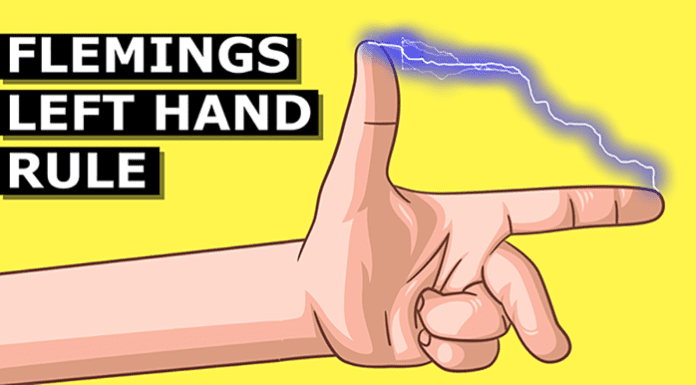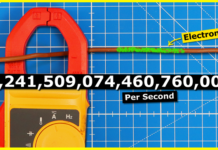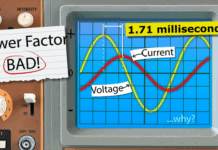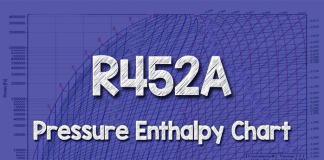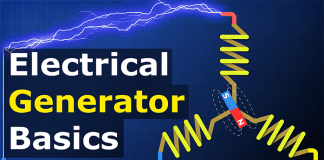In this article we’re going to learn the Flemings Left Hand Rule. This rule is important for determining the direction of rotation for a DC motor.
Scroll to the bottom to watch the YouTube tutorial.
Something we must understand is Flemings Left Hand Rule, and for this we need to use our left hand in this funny shape.
You need to remember that Flemings rule uses conventional current and does not use electron flow.
Conventional current is from positive to negative. We use Flemings left hand rule to work out which direction the coil will push and pull as the electromagnetic field interacts with the magnetic field of the permanent magnet. If we look at the wire and visualize which end is connected to the positive or negative, we can work out the direction of force. To do that stick your left hand out flat with your palm facing you. Think of these being your thumb, then fingers one, two, three and four. First of all, close fingers three and four. Point finger two to the right, so its perpendicular to your palm. Then point finger one straight ahead and point your thumb upwards. Your second finger points in the direction of conventional current, from positive to negative. Your first finger points in the direction of the permanent magnetic field from north to south. Your thumb will then point in the direction of force.
Now I’ve made a PD guide for this which includes some worked examples to help you remember it. You can get your copy HERE.
So If we look at this example, the conventional current is coming towards us and the magnetic field is going from left to right. So we point our second finger towards us and the first finger in the direction of the magnetic field. Our thumb is therefore pointing upwards which means the force on the wire will move it upwards. In this example we have the conventional current reversed in the wire so its moving away from us. Therefore we flip our hand over so our second finger is pointing away from us.
Our first finger still points in the direction of the magnetic field and our thumb points downward. This means the force on the wire will move it downwards. If we wrap the wire into a coil how will the forces act now?
Well we need to consider the coil as two halves. On the left half, the conventional current is flowing away from us. So our hand flips and we see we get a downward force. On the right side, the conventional current is flowing towards us so the force is upward. Therefore we have a combined upward and downward force so the coil will rotate.

